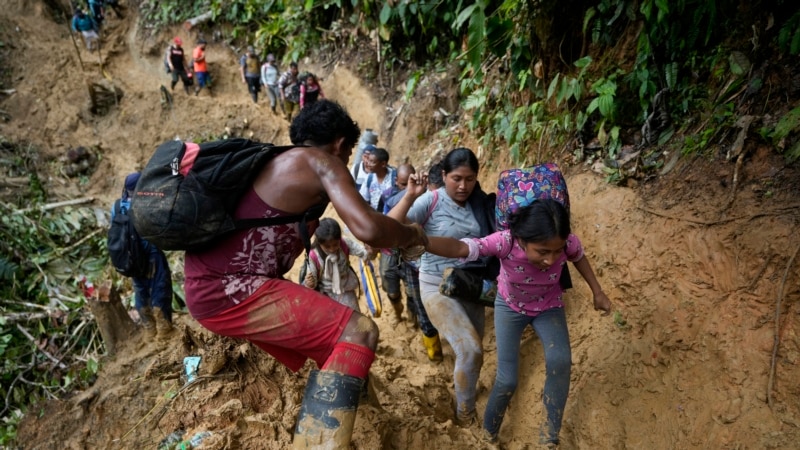Venezuelan migrant women and girls face greater challenges in their migration process, as they arrive in host countries in conditions of vulnerability, according to the NGO Save the Children Colombia. In Colombia, many Venezuelan women and girls face difficulties accessing educationwork and health.
María Paula Martínez, director of the NGO Save the Children Colombia, assures that among the challenges faced by the female migrant population are stigmatization, teenage pregnancy and gender violence.
“The girls and women who are crossing the borders of this country face risks” such as “child labor, sexual exploitation, commercial exploitation and are invited to participate in coca leaf scraping in various areas of Colombia,” Martínez told the voice of america.
This problem is not only present in Colombia, said Martínez. “Colombia is absorbing the largest number of migrant women and girls, however, we have a traveling population that goes with their children to Ecuador, Peru, Chile and Argentina, and along the way they are exposed to different dangers, especially women traveling alone who are walking, taking buses to get to Necoclí, to be able to cross the great jungle of Darien”.
Among the dangers to which the migrant population is exposed are exploitation, forced labor, wage inequity, mistreatment, xenophobia, racism, discrimination and social insecurity. Girls are the ones with the least opportunities and access to rights such as sexual and reproductive health and education, according to the NGO
In many cases, families normalize women and girls to do unpaid work in the home. This has influenced sexist violence, the increase in femicide and poverty exacerbated by Venezuelan migration, according to Save the Children.
“Of seven million Venezuelans who left their country several years ago, 2.4 million decided to stay in Colombia,” said Martínez.
The number could be higher if we take into account the underreporting of people who have arrived through irregular steps and who have not yet advanced their regulation process to enter the country. According to figures from Migración Colombia, of the 2.4 million Venezuelans residing in the country, 52% are women and 48% are men.
According to recent data from the United Nations, the number of Venezuelans who left their country reached 6.8 million. Most of them have settled in Latin American and Caribbean countries.
“The main challenge we have in Colombia is humanitarian assistance to programs of greater stabilization and improvements in the quality of life,” said Martínez.
Programs such as the World is My Home, the Boys and Girls Club and Health, Water and Sanitation Support for Venezuelan Migrants and Refugees in Colombia, from Save the Children, serve this population in a situation of vulnerability in Colombian departments bordering Venezuela, such as La Guajira, Arauca and North of Santander.
In this sense, Lina Arroyave, a researcher from the NGO Dejusticia, explained to the VOAthat the Colombian authorities must redouble their efforts to prevent more women and girls from being exposed to violence and discrimination.
“The different entities such as the Ombudsman’s Office, the Attorney General’s Office and Migration Colombia have advanced several processes to prevent these situations, but there is still much more to continue fighting and stopping sexual exploitation and trafficking in women, which is still what persists,” he said.
Another of the challenges of migrant women occurs in those who have children, because the burden of care falls on them, which translates into economic difficulties and obstacles to getting a job and accessing the education and health system.
“There must be greater articulation between the states, to propose what are going to be the mechanisms that each country is going to develop to integrate the people who want to stay, because what we noticed is that regularization routes, in many cases they are difficult”, he concluded.
Connect with the Voice of America! Subscribe to our channel Youtube and turn on notifications, or follow us on social media: Facebook, Twitter and Instagram















